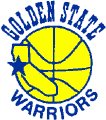 |
|
 |
BIOGRAPHY
Born on Japan’s third largest island is their tallest resident, basketball player Yasutaka Okayama. Ironically, Okayama’s interest wasn’t shooting hoops while growing up, but the study of the self-defense art form Judo. This interest followed him through high school and the beginnings of his collegiate studies at Osaka University of Commerce.
While at the University, Okayama began to direct more of his time and energy into developing his basketball skills. Odd enough, as a player on Osaka’s team, he was given the nickname “Chibi”, which in Japanese means “shorty”. It’s hardly the name one would call to mind when they see a 7-8, 300 pound giant.
Soon, he was asked to join the pro basketball team, Sumitomo Metal Industries of the JBL (Japanese Basketball League). The results that year were wonderful. Okayama earned the league’s Rookie of the Year honors as the leader in rebounding. Internationally he began to play in competitions (such as the FIBA Asian Championships) as a member of the Japan National Team, competing against other international squads. Standing at 7-8, there weren’t many to match Okayama until he met his rival, 7-6 Me Tie Zhu of China’s National Team.
Okayama and Tie Zhu were caught in a battle of national pride. A Taiwan magazine went so far as to feature a photograph of the players on their cover with the heading, Chinese Commies vs. Japan. “Fierce intensity” described the battle between the two, but it was Mu Tie Zhu that was counted as the victor by most accounts. Nevertheless, Okayama remained one of Asia’s dominant big men, leading the JBL’s league in scoring and rebounding in the 1981 season.
This same year, he achieved an honor few in the basketball world expected when he became the first Asian player to be drafted by the NBA. Many draft history buffs will contest this fact, arguing that Wataru “Wat” Misaka was the first Asian drafted in 1947. However, they fail to consider that Misaka was born in American and attended the University of Utah. Okayama, on the other hand, had no American ties and was practically taken sight unseen. Golden State found him too tempting to pass up.
Unfortunately, Okayama was slow, and at the age of 27, older than most rookies. He was also concerned about his potential playing time, not wanting to sit at the end of an NBA bench worried about his contract. And as with all early foreign-drafted players, the political climate of the times was not favorable. These factors made getting to the NBA difficult, if not impossible. With all of this in mind, Okayama stayed in Japan and became a JBL veteran, playing 11 years. During this time, he won the MVP award, was a six time All JBL first team selection, a three-time leading rebounder and two-time leading scorer.
Then in 1990, Okayama called it quits for basketball. He traveled abroad, coming to America to study for one year. Upon his return to Japan, he jumped into the coaching ranks and has been there ever since. During his free time, Okayama holds youth basketball clinics and works as a JBL commentator. Recently, he was named to the Japanese Sport Master group, a high honor reserved only for Japan’s best athletes of the past.
BIOGRAPHY If you have additional information you would like to contribute to any player profile (i.e. missing stats, biography), please click here. Please be aware that you must have a verifiable source.
| Statistics | ||||||||||||||||||
|
SEASONS |
GP |
FG% |
FT% |
SPG |
BPG |
RPG |
APG |
PPG |
||||||||||
|
1975-76 Portland JV. |
Did Not Play Varsity on JV Team |
|||||||||||||||||
|
1976-77 Portland JV. |
Did Not Play Varsity on JV Team |
|||||||||||||||||
|
1977-78 Military Service |
Did Not Play |
|||||||||||||||||
|
1978-79 Military Service |
Did Not Play |
|||||||||||||||||
|
1979-80 Sumitomo |
10 |
N/A |
46.8 |
N/A |
N/A |
9.3 |
N/A |
21.9 |
||||||||||
|
1980-81 Sumitomo |
10 |
N/A |
50.9 |
N/A |
N/A |
11.3 |
N/A |
26.5 |
||||||||||
|
Totals |
20 |
N/A |
49.4 |
N/A |
N/A |
10.3 |
N/A |
24.2 |
||||||||||
